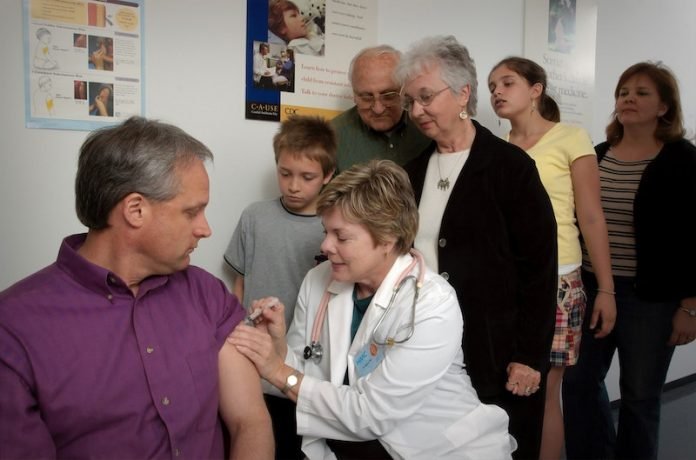
Only one in three U.S. adults received the flu vaccine in 2018, a number that has critical implications for the impending flu season.
The flu season threatens to overwhelm medical resources and lead to tens of thousands of deaths at a time when Americans are still reeling from the COVID-19 pandemic.
In a new study, researchers have found the demographics of those groups who are less likely to receive the flu shot.
These findings may inform public health efforts for future COVID-19 vaccines, and raise questions about making both flu and COVID vaccines free of charge and mandatory.
The research was conducted by a team at UC San Francisco.
In the study, the researchers evaluated self-reported flu vaccination rates for 2018, which included data from the 2017-18 flu season (61,000 deaths) and the 2018-19 season (34,200 deaths).
The team says to achieve herd immunity, people would need to reach about an 80% vaccination rate, but no subgroup in this study exceeded 60%.
While social distancing, mask-wearing, and staying away from crowds will mitigate the spread of the flu, a dangerous type of the flu—such as the 2017-18 flu season—could result in more than 61,000 fatalities.
The team found age, insurance status, and having a personal doctor were among the biggest determinants of whether a person had a flu shot.
Some 22.6% for those ages 18 to 24 got the flu vaccine, versus 59.3% of those over 75. Among those without insurance 16.1% were vaccinated, versus 41.6% for those with insurance.
For patients without a personal doctor, 19.4% were vaccinated, versus 43.6% for those with a personal doctor.
Not having a chronic condition was linked to lower rates. Some 31.6% of those with no chronic condition were vaccinated, versus 52.7% for people with four or more chronic conditions.
Variation by income group was smaller. Some 33.9% for those with a household income of less than $15,000 were vaccinated, versus 41.8% of those with an income of more than $50,000.
The team also found rates were lowest in Texas (26.4%) and highest in Washington DC (44.2%). Men were less likely than women to receive the flu shots (36.7% versus 41.6%).
They say that to boost vaccination rates, both long-term and short-term interventions are needed.
The ongoing pandemic also raises the issue of whether the flu vaccine and the future COVID-19 vaccine should be mandated
While a federal mandate may be difficult politically, private organizations like colleges and employers could make attendance and employment contingent on getting up-to-date with vaccines.
One author of the study is R. Adams Dudley, MD, MBA.
The study is published in the Journal of General Internal Medicine.
Copyright © 2020 Knowridge Science Report. All rights reserved.



